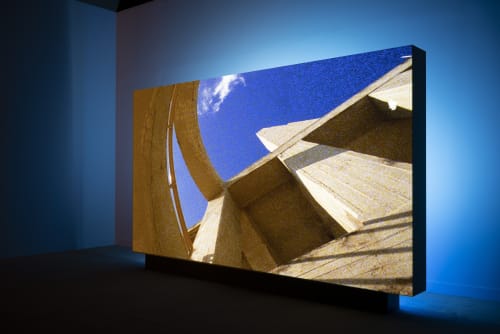When Ericka Beckman, internationally exhibited artist and professor at MassArt, began her career in the early 1970s, her driving quest was to bring abstract thought into an observable plane, to create an external space for large, complex concepts to take shape. Filmmaking was neither her education nor her goal, yet the medium presented itself as the most tangible way to bring her vision forward. In particular, Beckman discovered a Japanese camera which allowed a double exposure, meaning she could place animation over live action-a stunningly innovative method for its time.
Beckman's work, informed by a study of cartoons and surrealist film, attempts to create a language using symbols and objects as a means to more directly communicate inner thought. The exhibit at MIT presents four of Beckman's seminal films and is the largest installation of her work within the United States to date.
Cinderella (1986) places the protagonist in a smelt factory where her attempts to become the "correct" image and "win" the prince ultimately give way to a determined self-proclaiming and feminist identity. In Switch Center (2003), capitalism, communism, individualism and fairytale collide and "work" takes on a strange, dreamlike pretend quality, made more poignant by the reality that it was filmed in a defunct Budapest industrial building. You The Better (1983) plays with, and contorts, ideas about gaming-from child's play to the then emerging screen-based games, to gambling for gain. Her most recent work, Tension Building (2016), provides a dizzying and disorienting perspective on many of the same themes, set within a more recent context.
While elements of Beckman's work relate in color and texture to that of Dara Birnbaum, Bill Viola and Laurie Anderson, her voice remains distinctly and uniquely her own. Again and again she returns to the concepts of play, structure, identity, gender norms and the question of self-determination v. predestination with her trademark use of bold colors, repetitious action and layered meanings. Many of the questions posed by Beckman 30 years ago have reemerged as the pressing questions of today, making clear how very prescient her work was at the time, and how very relatable it is in the present.

